One of the most vital nutrients your body requires is magnesium. It is responsible for many biochemical reactions in the body. Plus, it helps in keeping your bones healthy and strong. Magnesium is a mineral that your body cannot produce. So, you need to find out all the food sources of magnesium. Keep scrolling down to know the food sources and not depend on magnesium supplements!
Table of Contents
Why Is Magnesium Essential?
Magnesium is a mineral that is responsible for several vital body functioning. Athletes require magnesium to get energy as it helps in the transportation and production of energy to the body cells. More so, it helps in relaxing and contracting the muscles.
Plus, your body requires magnesium to produce protein and supports several enzymes in your body to function smoothly. It helps regulate blood pressure, supports heart health, and even helps your body produce antioxidants to keep away from several diseases.
Magnesium, in particular, helps in producing glutathione. Your body needs this antioxidant to protect the immune cells and boosts them in functioning to the optimal level.
20 Food Sources of Magnesium
You already know that magnesium is essential for the well-being and functioning of your body. So, let us check out what the food sources of magnesium are:
Dark Chocolate
Is there anyone who does not like having chocolates? Well, it is food that gives you the utmost happiness. And when it comes to dark chocolate, it possesses several health benefits.
Dark chocolate contains phenylethylamine that is a hormone-like substance that helps in releasing ‘feeling good’ hormones. More so, it helps in lowering your cholesterol levels and boosts your heart health. A 100 grams bar of dark chocolate contains around 228 milligrams of magnesium content. So, if you consume one bar of chocolate, you are sure to meet up to 70% of your daily recommended intake. But that is indeed not the right thing to do when it comes to chocolates.

White Beans
If you suffer from magnesium deficiency, then white beans must make it to your grocery shopping list. It not only provides you with loads of magnesium but also contains large amounts of folate and fiber.
If you consume around 100 grams, roughly half a cup of white beans, you will be getting around 190 milligrams of magnesium. It reduces the chances of heart attacks, type 2 diabetes, strokes, and high blood pressure. Some other sources of magnesium are fava beans, pinto beans, and navy beans.
Black Beans
Black beans are high in protein. But do you know it is rich in magnesium too? Well, by consuming 100 grams of black beans, you can get around 171 milligrams of magnesium.
You can consume black beans to keep your bones strong, as magnesium can combine with phosphorus and calcium. Plus, it helps in keeping your blood sugar levels in control. The antioxidants present in black beans can keep your heart in good health. You can consume them by soaking them overnight and finally boiling them. It is better to consume these rather than having the canned black beans.
Squash Seeds and Pumpkin
If you are looking for food sources of magnesium, pumpkin and squash seeds are the snacks filled with nutrition. It is not a great source of magnesium, but it also contains loads of iron and protein. One ounce of pumpkin or squash seeds can provide you with 168 milligrams of magnesium, 8 milligrams of iron, and 30 grams of protein.
The seeds also possess amino acid – tryptophan in high levels. So, you can consume them at night before you sleep to relax.
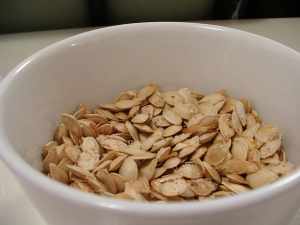
Plantains
Plantains are the starchy staple for thousands of people across the globe. You can prepare them easily and eat them as snacks. All you need to do is slice them well and then gently fry them to make a savory snack.
By consuming one plantain, you will get around 109 milligrams of magnesium. Apart from getting loads of magnesium, you will be getting vitamin A, iron, and potassium. All of which are great for your bones. You will also be getting a loaded amount of B complex vitamins that can reduce the chances of heart problems and stress.
Mackerel
If you have a magnesium deficiency, mackerel is an extraordinary choice. It contains loads of omega-3 fatty acids and many more nutrients. By consuming 100 grams of mackerel, you will be getting around 97 milligrams of magnesium.
Mackerel contains loads of vitamin B12 as well, which you usually get from red meat. But unlike other canned fishes, the mackerel you get in a can provides you with the same amount of vitamins and minerals you obtain from freshly-bought fish. However, if you are buying canned mackerel, make sure you have a close watch on what the label tells you.
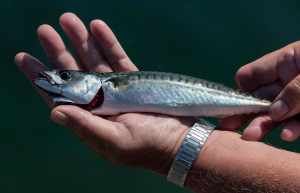
Spinach
When you think about what food is highest in magnesium, spinach can count as one of them. You can obtain the magnesium, in particular when you cook the spinach. That happens because when you cook spinach, it comes down to a small portion, unlike raw spinach. When you consume around 100 grams of spinach, you will be getting around 87 milligrams of magnesium.
Plus, you will also get loads of iron, vitamin C, and much more. Interestingly, when you consume cooked spinach or any other iron-rich veggies, vitamin C absorption is much better.
Swiss Chard
Dark leafy greens are superfoods that can provide you with loads of nutrients. So, how can they not make it to the list of food sources of magnesium? Apart from having a loaded amount of magnesium, Swiss chard also contains loads of vitamin K, A, and C. By consuming 100 grams of cooked Swiss chard, and you can get around 86 milligrams of magnesium.
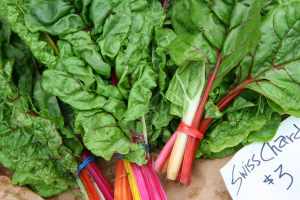
Almonds
Are you working on a weight loss program? Well, then you must be conscious about your nut intake! But the good news is that almonds are the nuts that contain the least amount of calories. One ounce only possesses around 164 calories. Apart from being a calorie food, almonds are also a great source of magnesium and calcium.
One large handful of almonds can provide you with 76.5 milligrams of magnesium and 76.3 grams of calcium. Almonds contain loads of heart-healthy fats and protein. You can also get loads of manganese and vitamin E from almonds. If you are thinking of making a list of foods high in magnesium and potassium, add almonds to the list.
Cashews
When you are making a list of magnesium food sources, don’t miss out on cashews. One-ounce cashews can provide you with 73.7 milligrams of magnesium. Also, you can get adequate amounts of vitamin B6, E, and K through cashews.
Plus, you can get loads of minerals like iron and potassium through cashews. So, if you are making a list of food sources of magnesium and potassium, add cashews!
Figs
Many people do not like the taste of fresh figs. The dried ones have a sweet and pleasant taste, unlike the fresh ones. Plus, they are loads of essential nutrients that keep you in optimal health.
Apart from getting a lot of magnesium, figs also offer adequate potassium, calcium, vitamin B6, and K and manganese. If you consume around 100 grams of dried figs, you can get around 68 milligrams of magnesium.
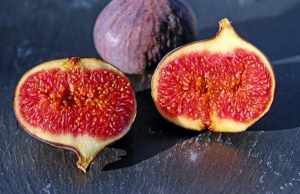
Quinoa
Do you think quinoa is a fruit? Well, quinoa is a grain that contains loads of nutrients. By consuming around 100 grams of quinoa, you can get around 64 milligrams of magnesium.
If you happen to follow a vegetarian or vegan diet, then quinoa can be a great choice. It contains loads of nutrients that are essential for your health overall. Plus, unlike other plant protein sources, quinoa can provide you with all nine amino acids and protein. Plus, you can get 5 grams of fiber and 3.5 grams of healthy fats from quinoa.
Edamame
If you are looking for potent food sources of magnesium, then edamame can be a great choice. You can call edamame as the relative of white and black beans. One cup of edamame can supply you with 62 milligrams of magnesium. You can also get loads of antioxidants, vitamin K, healthy fibers, and vegan protein from edamame.
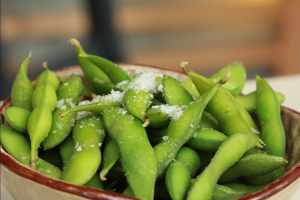
Tuna
People usually refer to tuna as the ‘chicken of the sea.’ Are you wondering why? Well, it is because of the mild flavor and white hue. So, if you are not an ardent fan of seafood, tuna can be a great choice to get loads of omega-3 fatty acids and many more nutrients.
By consuming one can that is approximately 100 grams of tuna, you will be getting around 64 grams of magnesium. If you do not like having red meat much, you can opt for tuna to get vitamin B12. Isn’t that amazing?
Tofu
Are you following a vegan diet plan? Do you worry about your nutrient intake? Well, you don’t have to worry when it comes to tofu! It has not only made it to the list of food sources of magnesium but other nutrients too. Tofu contains large amounts of copper, phosphorus, selenium, manganese, iron, and calcium. If you consume around 100 grams of tofu, you are sure to get around 60 milligrams of magnesium.
It is not only nutritious food, but it is also an adaptable food. You can add it to your smoothies, curries, salads, tacos, and so much more. Tofu can let you do a lot with its versatility.
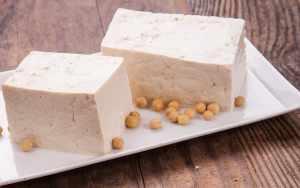
Avocados
You can vouch for the benefits of avocados. It is one of the most nutritious and healthiest foods the world holds. It contains loads of vitamins, heart-healthy fats, minerals, fiber, and much more. By consuming one medium-sized avocado, you will be getting around 58.3 milligrams of magnesium.
Avocados also contain loads of fiber that help keep your gut healthy and reduce the chances of having diabetes. Avocados are rich in protein content, but it has a low amount of sugar present in them.
Whole Grain Cereal
It is always best you choose the whole grain cereals rather than having the processed cereals. That is because whole grain cereals contain the protein-germ and mineral content.
However, you should keep in mind that the nutrient content depends much on the type of whole-grain cereal you are consuming. But approximately one cup of whole-grain cereal contains around 52.4 milligrams of magnesium.
Peanuts
Peanuts can cause allergies. So, you must check if you are allergic before you include them in your diet. Once you are sure that you are not allergic to peanuts, start including them in your diet to avail the various benefits peanuts possess.
Peanuts contain large amounts of antioxidants that make them a better option than beets and carrots. One ounce of peanuts contains around 49.9 milligrams of magnesium. Apart from getting loads of magnesium, you can also get heart-healthy monounsaturated fats, copper, and all B complex vitamins.
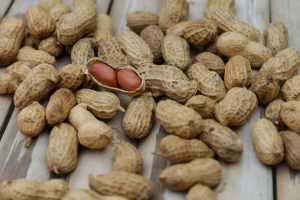
Prunes
Prunes are a great option if you are searching for healthy foods. It is a nutrient-dense and contains a comparably lower amount of water than fresh foods. Prunes lose out on their vitamin C content because it is dried. But it does possess a large amount of magnesium. If you consume around 100 grams of prunes, you can get around 41 milligrams of magnesium.
When you are purchasing prunes, always choose the ones that contain no preservatives or added sugar. Prunes can also benefit your bones because of their magnesium content. So, if you are looking for food sources of magnesium, don’t miss out on prunes.
Potatoes
Apart from containing loads of magnesium, you can get loads of potassium, vitamin B6, fiber, vitamin C, and magnesium. If you bake one potato, you can get around 39 milligrams of magnesium.
It is always best you consume the potatoes baked rather than munching on French fries. You can always bake potatoes and enjoy your favorite snacks to get loads of nutrients. But if you happen to have diabetes, keep a close watch on your potato intake.
Final Thoughts
With all the food sources of magnesium mentioned above, it is difficult to have any magnesium deficiency. So, start including these magnesium-rich fruits, veggies, and nuts to give your bones the perfect boost.
However, if you are deficient in magnesium, you should consult your doctor to curate the perfect diet chart.




























